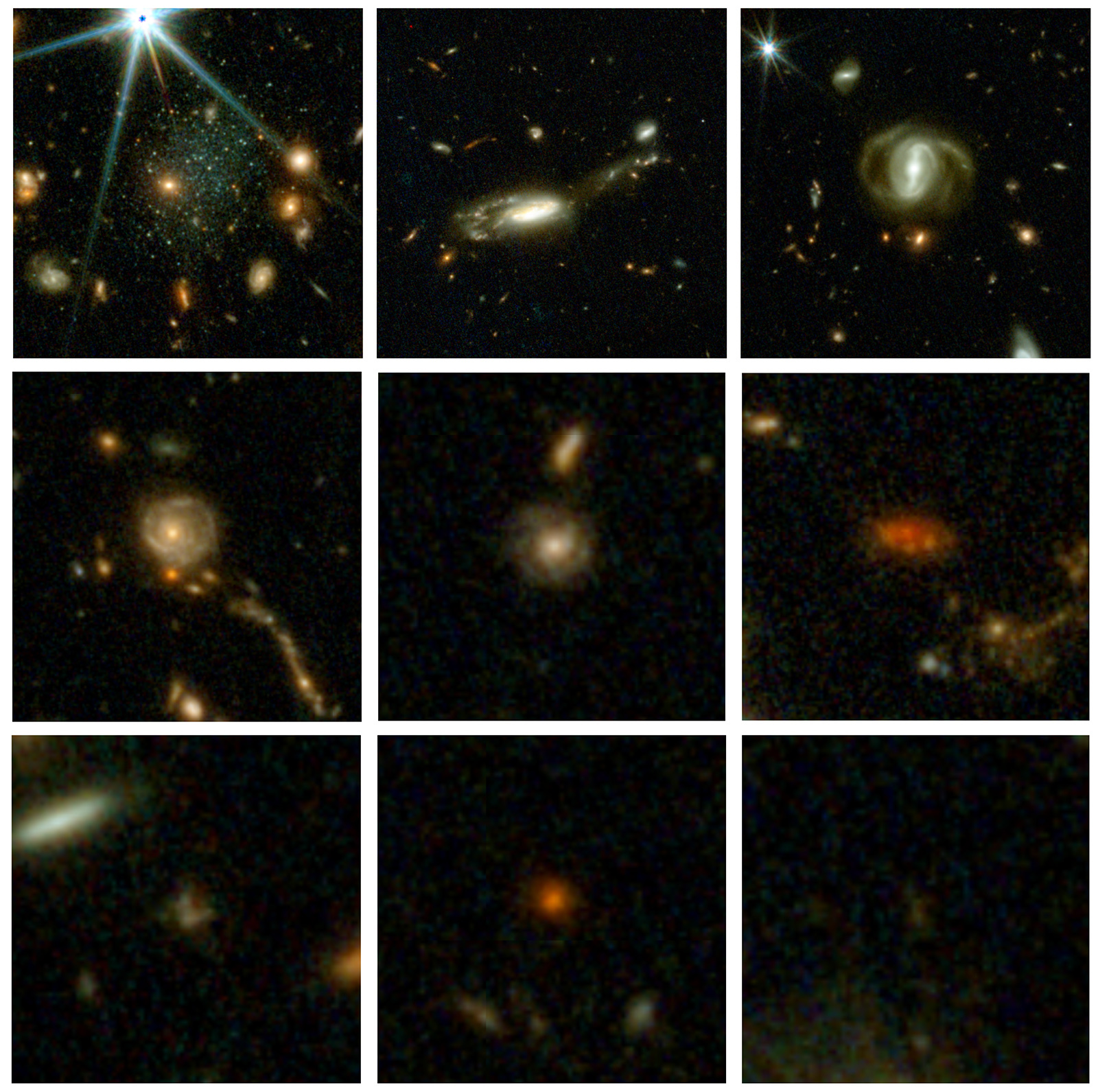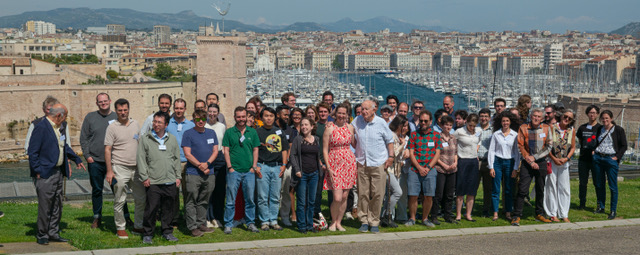COSMOS-WEB UNVEILS LARGEST LOOK EVER INTO THE DEEP UNIVERSE
After two decades pioneering open data astronomy, the COSMOS collaboration — with the French institutes LAM and IAP at its heart — today releases its most ambitious catalogue to date, comprising 780,000 objects observed by the James Webb Space Telescope (JWST). Covering an area several times larger than the full moon, the COSMOS field dwarfs previous JWST surveys and offers one of the deepest and widest views of the distant Universe. All data is freely provided to the community.
The COSMOS collaboration aims to understand the interplay between galaxy formation and large-scale structures. Pioneering measurements of the distribution of dark matter using Hubble Space Telescope observations in 2004 set the template for future space missions. Since then, the COSMOS field has been enriched by deeper data from telescopes across the electromagnetic spectrum, making the COSMOS field an indispensable reference in extragalactic astronomy.

Figure 1: Nine galaxies among more than 700,000, spanning the full range of cosmic epochs. From top to bottom, starting on the left: the present-day Universe, and then 3, 4, 8, 9, 10, 11, 12, and 13 billion years ago.
Credit: COSMOS team.
In 2022, the COSMOS team were awarded a 250-hour program with JWST to cover COSMOS with JWST's sensitive NIRCAM and MIRI instruments. The COSMOS2025 catalogue derived from these data presented today provides exceptionally detailed information for each galaxy, including shapes, distances, and masses. These observations confirm the puzzling abundance of massive galaxies in the early Universe seen by smaller surveys.
Marko Shuntov, a former PhD student at the IAP who defended his thesis in 2022 and is currently a postdoctoral researcher at the Cosmic Dawn Centre in Copenhagen, is the first author of the COSMOS catalogue presentation paper. Max Franco, a postdoctoral researcher at CEA Saclay, is the first author of the paper on the NIRCAM image reduction. Santosh Harish, a postdoctoral researcher at RIT in Rochester (USA), leads the paper on the MIRI data processing.

Figure 2: Part of the COSMOS team at their meeting in Marseille in May 2025
Credit: H. J. McCracken for COSMOS.
An interactive viewer allows everyone to explore the data. All COSMOS data processing was carried out with a specialized computer cluster at IAP, funded by the CNRS, CNES and the region Île-de-France.
The free exchange of data over the internet has revolutionised astronomy. Open science lies at the heart of the COSMOS project; anyone can access the data and join the collaboration. For the team, the mission to not only understand the Universe but to provide open and freely accessible data continues.
Links
![]() The interactive viewer on a specialized computer cluster at IAP
The interactive viewer on a specialized computer cluster at IAP
![]() The science paper on arXiv.org by Shuntov et al. : « COSMOS2025: The COSMOS-Web galaxy catalog of photometry, morphology, redshifts, and physical parameters from JWST, HST, and ground-based imaging »
The science paper on arXiv.org by Shuntov et al. : « COSMOS2025: The COSMOS-Web galaxy catalog of photometry, morphology, redshifts, and physical parameters from JWST, HST, and ground-based imaging »
![]() The science paper on arXiv.org by Franco et al. : « COSMOS-Web: Comprehensive Data Reduction for Wide-Area JWST NIRCam Imaging »
The science paper on arXiv.org by Franco et al. : « COSMOS-Web: Comprehensive Data Reduction for Wide-Area JWST NIRCam Imaging »
![]() The science paper on arXiv.org by Harish et al. : « COSMOS-Web: MIRI Data Reduction and Number Counts at 7.7 m using JWST »
The science paper on arXiv.org by Harish et al. : « COSMOS-Web: MIRI Data Reduction and Number Counts at 7.7 m using JWST »
![]() The press release by Cosmos-Web
The press release by Cosmos-Web
![]() An in-depth article devoted to the COSMOS-Web project on BigThink
An in-depth article devoted to the COSMOS-Web project on BigThink
Writing and contact
- Henry Joy McCracken
Institut d’astrophysique de Paris, CNRS, Sorbonne Université
hjmcc [at] iap [dot] fr
In France, the COSMOS collaboration has benefited from CNES support for over 20 years.
Layout: Jean Mouette
June 2025
